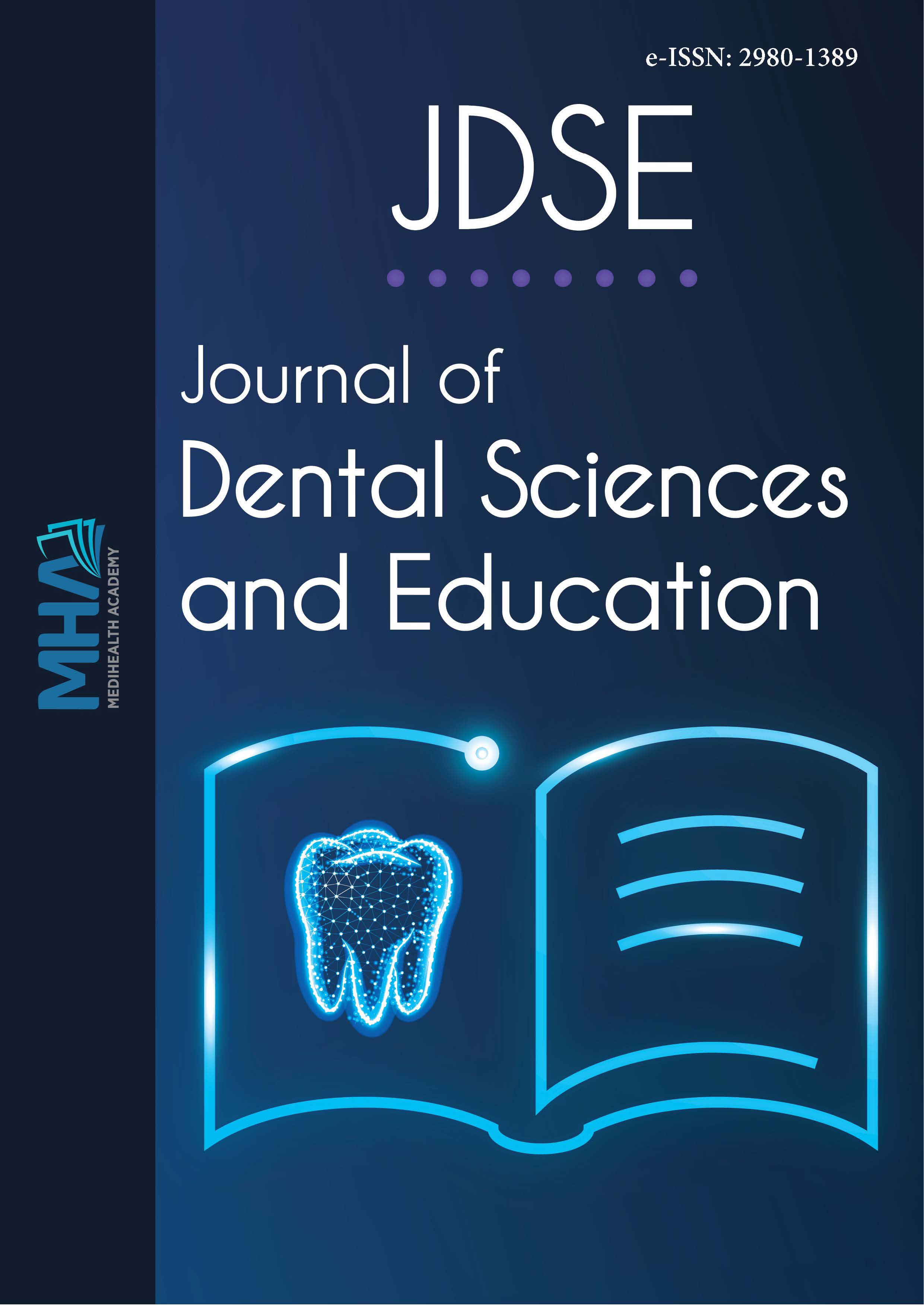1. AlGhamdi KM, Moussa NA. Internet use by the public to search for health-related information. <em>Int J Med Inform.</em> 2012;81(6):363-373.
2. Alikhasi M, Yousefi P, Afrashtehfar KI. Smile design: mechanical considerations. <em>Dent Clin North Am.</em> 2022;66(3):477-487.
3. Korkut B, Yanıkoğlu F, Günday M. Direct composite laminate veneers: three case reports. <em>J Dent Res Dent Clin Dent Prospects.</em> 2013;7(2):p.105.
4. Available from: https://blog.youtube/press.
5. Onder ME, Zengin O. Quality of healthcare information on YouTube: psoriatic arthritis. <em>Z Rheumatol.</em> 2023;82(Suppl 1):30-37.
6. Amante DJ, Hogan TP, Pagoto SL, et al. Access to care and use of the internet to search for health information: results from the US National Health Interview Survey. <em>J Med Internet Res.</em> 2015;17(4):e106.
7. Escoffery C, Miner KR, Adame DD, et al. Internet use for health information among college students. <em>J Am Coll Health.</em> 2005;53(4):183-188.
8. McLean S, Cook N, Rovira-Wilde A, et al. Evaluating YouTube as a patient information source for the risks of root canal treatment. <em>J Endod.</em> 2023;49(2):155-161.
9. Fox S. The social life of health information. <em>California Healthcare Foundation.</em> 2011.
10. Nason K, Donnelly A, Duncan HF. YouTube as a patient-information source for root canal treatment. <em>Int Endod J.</em> 2016;49(12):1194-1200.
11. Özbay Y, Çırakoğlu NY. YouTube as an information source for instrument separation in root canal treatment. <em>Restor Dent Endod</em>. 2021;46(1):e8.
12. Kurian N, Varghese KG, Daniel S, et al. Are YouTube videos on complete arch fixed implant-supported prostheses useful for patient education?. <em>J Prosthet Dent.</em> 2022;131(4):684-688.
13. Yagci F. Evaluation of YouTube as an information source for denture care. <em>J Prosthet Dent. </em>2023;129(4):623-629.
14. Degirmenci K, Saridag S. Can YouTube videos be helpful in promoting self-performed denture hygiene?. <em>Internet J Allied Health Sci Pract.</em> 2022;31:20-22.
15. Varghese NS, Cherian JM, Thomas AM. Credibility of YouTube™ videos on root canal treatment in children. <em>J Indian Soc Pedod Prev Dent.</em> 2022; 40(2):154-158.
16. Aksoy M, Topsakal KG. YouTube™ for information on paediatric oral health instructions. <em>Int J Dent Hyg.</em> 2022;20(3):496-503.
17. Hegarty E, Campbell C, Grammatopoulos E, DiBiase AT, Sherriff M, Cobourne MT. YouTube™ as an information resource for orthognathic surgery. <em>J Orthod.</em> 2017;44(2):90-96. doi:10.1080/14653125.2017.1319010
18. Habib SR, Khan AS, Ali M, et al. An evaluation of the usefulness of YouTube® videos on crown preparation. <em>Biomed Res Int.</em> 2022;2022: 1897705. doi:10.1155/2022/1897705
19. Kodonas, K, Fardi A, YouTube as a source of information about pulpotomy and pulp capping: a cross sectional reliability analysis. <em>Restor Dent Endod.</em> 2021;46(3):p.e40.
20. Topsakal KG, Aksoy M, Akbulut AS. Evaluation of the contents of YouTube videos on orthodontic treatments applied to children. <em>NEU Dent J.</em> 2021;3(3):108-114.
21. Lena Y, Dindaroğlu F. Lingual orthodontic treatment: a YouTube™ video analysis. <em>Angle Orthod.</em> 2018;88(2):208-214.
22. Gupta J, Agarwal A, Lahori M. A comparative evaluation of shear bond strength of direct composite laminates using different surface treatments: an in vitro study. <em>J Interdiscip Dentistry.</em> 2022;12(3):83-89.
23. Celik N, Yapar MI, Taşpınar N, Seven N. The effect of polymerization and preparation techniques on the microleakage of composite laminate veneers. <em>Contemp Clin Dent.</em> 2017;8(3):400-404.
24. Şahin SC. Evaluation of YouTube videos about porcelain laminate veneers. <em>Acta Odontol Turc.</em> 2021;38(1):19-27.
25. Jung MJ, Seo MS. Assessment of reliability and information quality of YouTube videos about root canal treatment after 2016. <em>BMC Oral Health.</em> 2022;22(1):494.
26. Yavuz MC, Buyuk SK, Genc E. Does YouTube™ offer high quali0ty information? Evaluation of accelerated orthodontics videos. <em>Ir J Med Sci</em>. 2020;189(2):505-509.
27. Erturk-Avunduk AT, Delikan E. Evaluation of the quality of YouTube™ videos about pit and fissure sealant applications. <em>Int J Dent Hyg.</em> 2023; 21(3):590-598.
28. Yağcı F. Evaluation of YouTube as an information source for fixed prosthetic restorations. <em>JHS.</em> 2021;30:191-199.
29. Abukaraky A, Hamdan AA, Ameera MN, et al. Quality of YouTube TM videos on dental implants. <em>Med Oral Patol Oral Cir Bucal.</em> 2018;23(4): e463-e468.
30. Wong NSM, Yeung AWK, McGrath CP, et al. Qualitative evaluation of YouTube videos on dental fear, anxiety and phobia. <em>Int J Environ Res Public Health.</em> 2022;20(1):750.
31. Chen J, Wang Y. Social media use for health purposes: systematic review. <em>J Med Internet Res.</em> 2021;23(5):e17917.
32. Kite J, Chan L, MacKay K, et al. A model of social media effects in public health communication campaigns: systematic review. <em>J Med Internet Res.</em> 2023;25:e46345.

